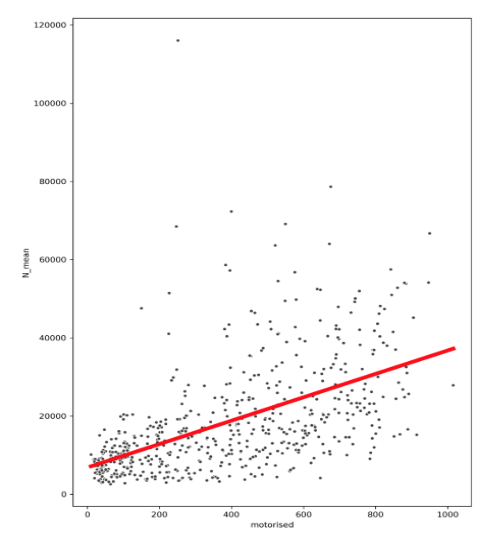Telraam traffic counts for Clean Air

Telraam and Clean air measures
Clean air is one of the main challenges faced by our urban areas in the 21st century. The level of premature death caused by air pollution on a global scale means policy action on this matter is urgent
Car traffic, still dominated by combustion engines, remains one of the main contributors to air pollution and so dealing with it is a key part of the solution to achieving clean air. Monitoring traffic is therefore an important element in any policy action on clean air initiatives.
Deploying Telraam devices fulfils several essential roles in air quality monitoring activities:
- Telraam, as a device for monitoring local traffic volumes, complements direct air quality measurements.
- Actions tackling air pollution often aim for a reduction of vehicle traffic, so Telraam delivers a detailed long-term tracking of air quality mitigation actions, before and after implementation.
- By engaging citizens directly in monitoring activities using Telraam raises public awareness and creates ownership of solutions.
Examples of Telraam applications
 COMPAIR, a European project, where Telraam traffic counting sensors are co-located with different types of air quality sensors. The goal of
the experiment is to understand if the affordable Telraam traffic counting sensor can supplement high-end air quality sensors.
COMPAIR, a European project, where Telraam traffic counting sensors are co-located with different types of air quality sensors. The goal of
the experiment is to understand if the affordable Telraam traffic counting sensor can supplement high-end air quality sensors.Telraam sensors are deployed alongside air quality sensors: SODAQ & OnePlanet NO2 AQ Sensor Prototype. These Telraam devices in Herzele will be used together with air quality monitoring systems to monitor the implementation of a school street. Additional deployment will happen in pilot sites in Athens, Berlin and Sofia.
 In a project for Canopea, a Belgian advocacy group, an ultra-fine particle sensor was installed close to an existing Telraam-device in Liège Métropole (BE).
In a project for Canopea, a Belgian advocacy group, an ultra-fine particle sensor was installed close to an existing Telraam-device in Liège Métropole (BE).Data-analysis confirmed the correlation between number of motorised vehicles (x-axis) and ultra-fine particles detected (y-axis).
Measuring air quality
Understanding the issues
It is important to measure air quality data to understand the issues we face, and where they are at their worst. However, while maps of air quality might highlight the link between poor air quality and roads and high traffic levels, on their own they do not distinguish between which interventions are having an impact. Also, air quality monitoring equipment is quite expensive, so air quality data is unavailable in most locations.
If the objective is to reduce car journeys, then you need to know how many cars are actually using the road, and when. You also need to assess which actions to reduce this are effective, such as legal speed restrictions, traffic calming, modal filters, behavioural messaging, road pricing, etc. Finally, you can match these interventions to the quality of the air that results.
Track interventions
It is important to track interventions designed to change traffic volume, not just the location of the intervention, but the surrounding streets as well. Like air movement, it is important to ensure traffic is not just reduced at a particular location through displacement.
It is important to have traffic counts before, during and after, in order to ensure that interventions and outcomes can be accurately attributed, and further enhancements (or corrections) can be carried out. Continuous measurement allows for more accurate solutions that are improved through feedback loops and local experience.